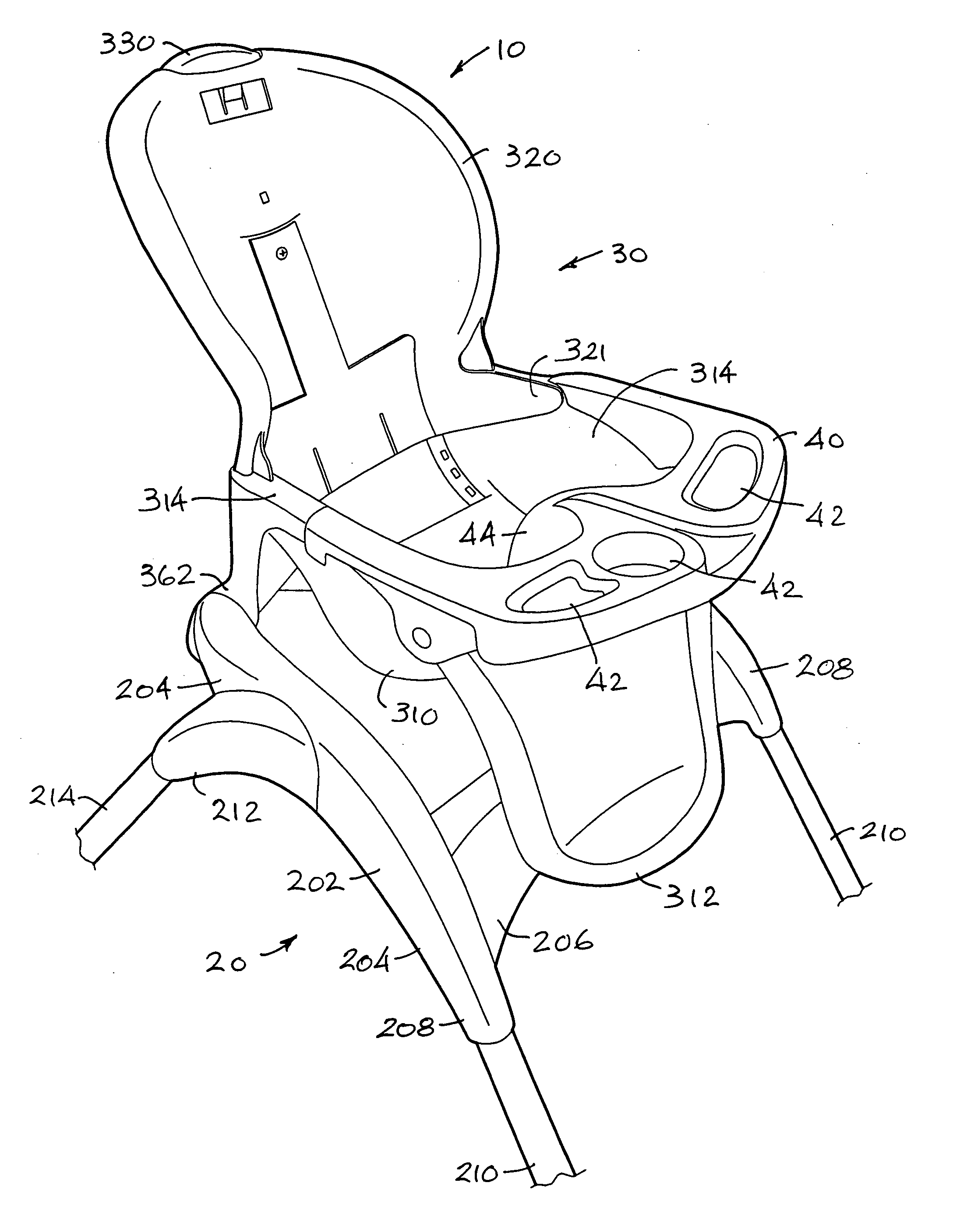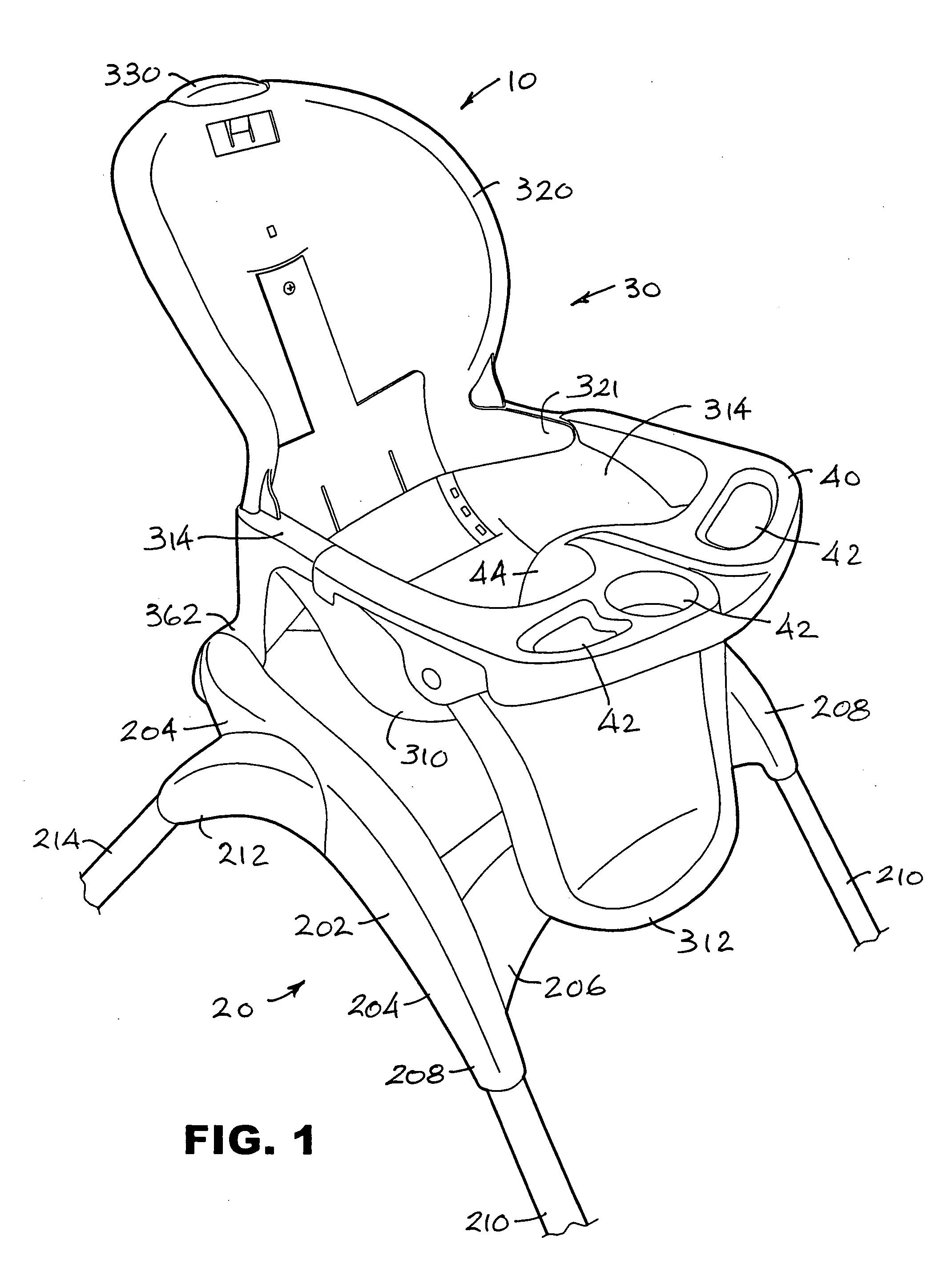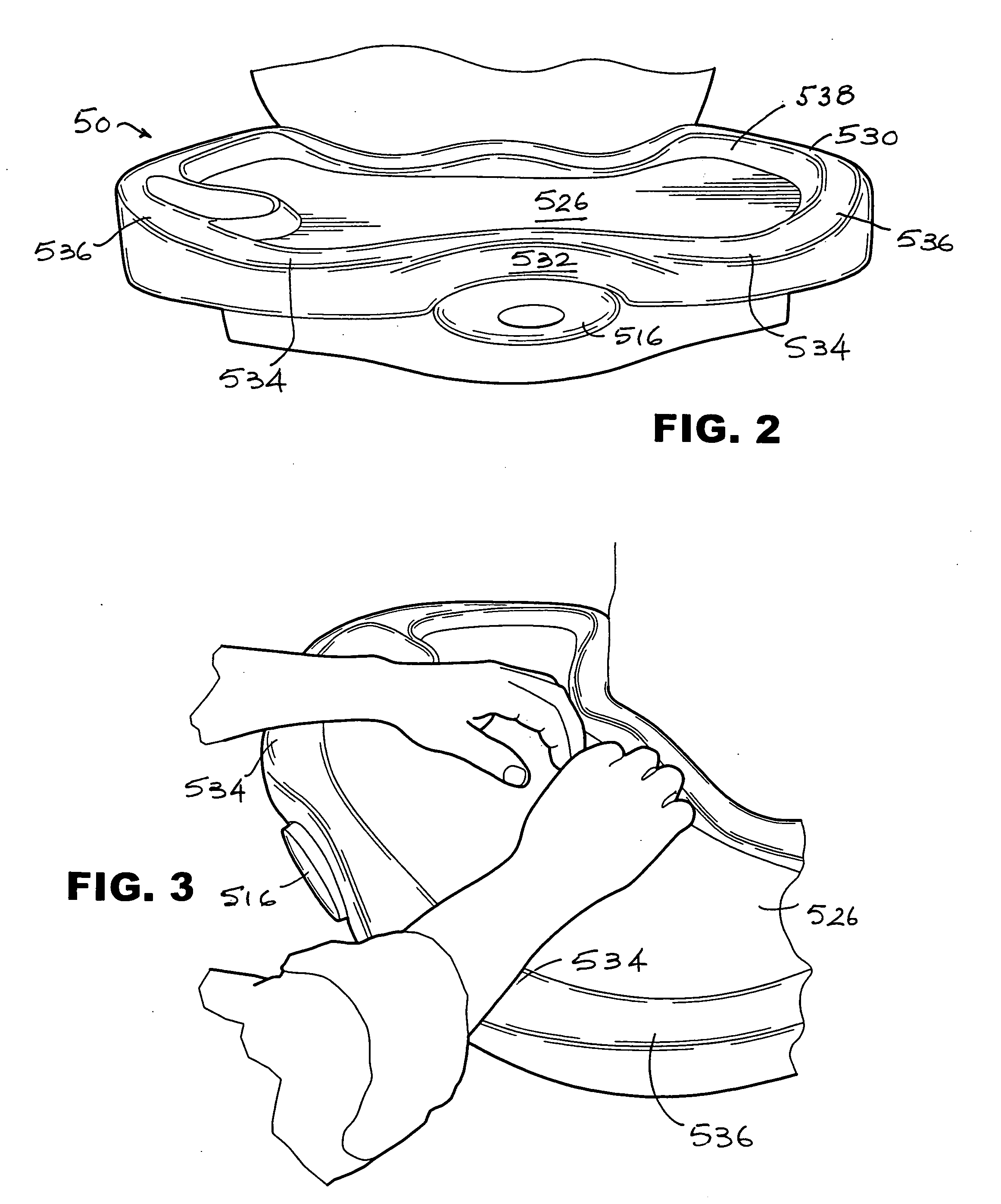High chair
a high chair and child technology, applied in the field of children's seating, can solve the problems of insufficient effective and controlled removal of debris, inability to provide a comfortable resting place for caregivers' arms, etc., to achieve convenient fore/aft adjustment of the tray, facilitate cleaning, and support stably
- Summary
- Abstract
- Description
- Claims
- Application Information
AI Technical Summary
Benefits of technology
Problems solved by technology
Method used
Image
Examples
Embodiment Construction
[0048] Reference will now be made in detail to presently preferred embodiments of the invention, examples of which are illustrated in the accompanying drawings. An effort has been made to use the same reference numbers throughout the drawings to refer to the same or like parts.
[0049]FIG. 1 generally shows a high chair 10 according to the invention, which comprises a floor-standing frame 20 supporting a seat 30. A removable arm bar 40 on the seat supports a removable tray 50 (see FIGS. 2, 6, 8).
[0050] Frame 20 has an integrally molded plastic chassis 202 with spaced side portions 204 interconnected by a front cross member 206. Chassis 202 also has fixed front leg sockets 208, which receive tubular front legs 210, and pivoting rear leg sockets 212, which receive tubular rear legs 214. Floor-engaging feet or casters (not shown) are provided at the bottom ends of legs 210, 214. The pivoting nature of rear leg sockets 212 enables the rear legs 214 to be folded for more compact storage ...
PUM
 Login to View More
Login to View More Abstract
Description
Claims
Application Information
 Login to View More
Login to View More - R&D
- Intellectual Property
- Life Sciences
- Materials
- Tech Scout
- Unparalleled Data Quality
- Higher Quality Content
- 60% Fewer Hallucinations
Browse by: Latest US Patents, China's latest patents, Technical Efficacy Thesaurus, Application Domain, Technology Topic, Popular Technical Reports.
© 2025 PatSnap. All rights reserved.Legal|Privacy policy|Modern Slavery Act Transparency Statement|Sitemap|About US| Contact US: help@patsnap.com



